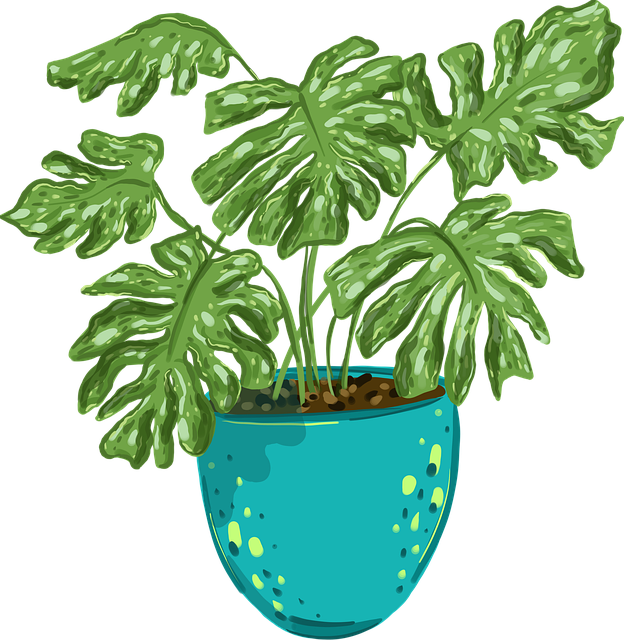Smart irrigation technology is revolutionizing biophilic interior design by mimicking nature's water cycle and using sensors for precise hydration, promoting plant health while conserving water. These systems eliminate manual watering, ensure consistent moisture, foster healthier plants, reduce stress on caretakers, and lower utility costs. By integrating advanced sensors, IoT connectivity, and climate data, smart irrigation and self-watering solutions create balanced ecosystems, enhance aesthetics, and promote human-plant connections in sustainable environments. Future trends include interconnected ecosystems and innovative systems for vertical gardens and automated indoor plant care, fostering deeper human-nature connections in living and working spaces.
In today’s quest for sustainable living, smart irrigation and self-watering systems are transforming plant care. This article explores cutting-edge technologies that ensure efficient water usage, particularly in the context of biophilic interior design. We delve into the benefits of self-watering solutions for these spaces, discuss designing sustainable water management strategies, and preview future trends shaping automated plant hydration. Embrace a greener approach to plant care with these innovative systems.
Understanding Smart Irrigation Technology for Efficient Plant Care
Smart irrigation technology is transforming the way we care for plants, especially in the context of biophilic interior design. These innovative systems are designed to mimic nature’s water cycle, delivering precise amounts of water directly to plant roots, where it’s needed most. By leveraging sensors and automated controls, smart irrigation ensures optimal hydration levels, minimizing waste and promoting healthy plant growth.
In today’s eco-conscious world, efficient water management is crucial for sustainable living. Smart irrigation systems adapt to various environmental factors like soil moisture, temperature, and sunlight exposure, ensuring plants receive the perfect balance of water. This technology is particularly beneficial in biophilic interior design, where bringing nature indoors enhances well-being and creates aesthetically pleasing spaces. By optimizing water distribution, these systems contribute to a greener, more sustainable environment within our homes and offices.
Benefits of Implementing Self-Watering Systems in Biophilic Interiors
Implementing self-watering systems in biophilic interiors offers a multitude of benefits that enhance both plant health and indoor environment quality. Biophilic interior design, which aims to connect people with nature, finds these systems particularly advantageous. By eliminating the need for frequent manual watering, self-watering solutions allow plants to receive consistent moisture levels, fostering healthier growth and reducing stress on overworked caretakers.
Moreover, these systems contribute to energy efficiency and sustainability within the built environment. Automated irrigation reduces water wastage by preventing over-saturation or under-watering, aligning with principles of eco-conscious design. This not only minimizes utility costs but also mitigates the environmental impact associated with excessive water consumption, making self-watering systems an integral part of any forward-thinking biophilic interior implementation.
Designing Sustainable Water Management for Plants and People
Designing sustainable water management systems for plants and people involves a harmonious blend of technology and nature, especially in the context of biophilic interior design. By incorporating smart irrigation and self-watering solutions, we can create spaces that not only support plant life but also enhance human well-being. These systems use advanced sensors to monitor soil moisture levels, ensuring plants receive precisely the right amount of water, thus conserving resources.
Moreover, this technology allows for automated adjustments based on environmental factors like temperature and sunlight exposure. In biophilic interior settings, where the goal is to bring the outdoors in, such smart systems contribute to a balanced ecosystem, promoting plant health while reducing water wastage—a key aspect in creating sustainable and aesthetically pleasing environments that foster human-plant connections.
Future Trends: Innovations in Automated Plant Hydration
The future of plant care lies in innovative smart irrigation and self-watering systems that cater to both the needs of plants and the aspirations of those who appreciate biophilic interior design. As technology advances, automated plant hydration solutions are becoming more sophisticated, integrating seamlessly with modern homes and offices. These systems leverage sensors, IoT connectivity, and climate data to deliver precise amounts of water directly to plant roots, eliminating waste and ensuring optimal growth conditions.
One trend to watch is the integration of smart irrigation into biophilic interior design. By creating interconnected ecosystems where plants thrive, these systems not only promote sustainable practices but also enhance the aesthetic appeal of spaces. From self-watering vertical gardens that adorn office walls to automated indoor potted plant care systems, these innovations are transforming how we interact with greenery in our living and working environments, fostering a deeper connection between humans and nature.
Smart irrigation and self-watering systems represent a significant leap forward in sustainable plant care, particularly within the context of biophilic interior design. By leveraging advanced technology and automated solutions, these systems not only ensure plants receive optimal hydration but also contribute to water conservation efforts. As we look ahead, future trends in automated plant hydration promise even greater efficiency and customization, making it easier than ever for spaces to incorporate lush greenery while balancing environmental responsibility.
